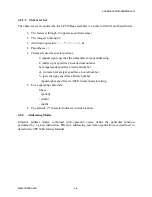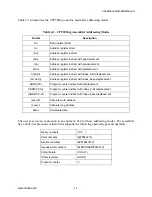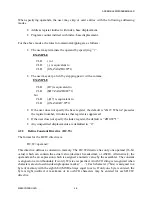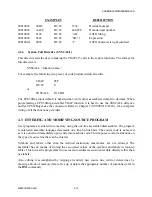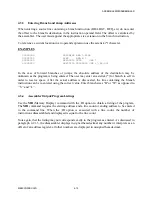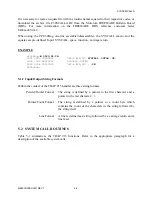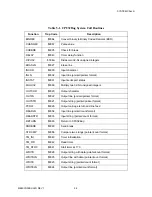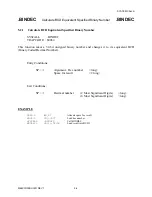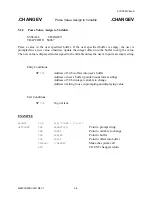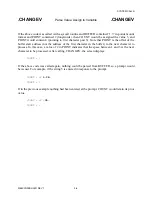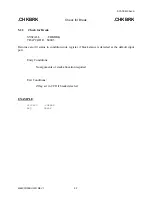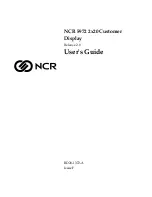
ASSEMBLER/DISASSEMBLER
M68CPU32BUG/D
4-4
4.2.1.2
Operand Field
If present, the operand field follows the operation field and is separated from the operation field
by at least one space. When two or more operand subfields appear within a statement, separate
them with a comma. In an instruction like ’ADD D1,D2’, the first subfield (D1) is called the
source effective address (<EA>) field, and the second subfield (D2) is called the destination
<EA> field. Thus, the contents on D1 are added to the contents of D2 and the result saved in
register D2. In the instruction ’MOVE D1,D2’, the first subfield (D1) is the source field and the
second subfield (D2) is the destination field. In other words, for most two-operand instructions,
the format ’<opcode> <source>,<destination>’ applies.
4.2.1.3
Disassembled Source Line
The disassembled source line may not look identical to the source line entered. The disassembler
decides how to interpret the numbers used. If the number is an offset of an address register, it is
treated as a signed hexadecimal offset. Otherwise, it is treated as a straight unsigned
hexadecimal.
EXAMPLE
MOVE.L
#1234,5678
MOVE.L
FFFFFFFC(A0),5678
disassembles to
00003000
21FC0000 12345678
MOVE.L
#$1234,($5678).W
00003008
21E8FFFC 5678
MOVE.L
-$4(A0),($5678).W
Also, for some instructions, there are two valid mnemonics for the same opcode, or there is more
than one assembly language equivalent. When the opcode is disassembled some instructions may
appear different from the originally entered code. As examples:
BT is dissembled as BRA
DBRA is dissembled as DBF
NOTE
The assembler recognizes two forms of mnemonics for two branch
instructions. The BT form (branch conditionally true) has the same
opcode as the BRA instruction. Also, DBRA (decrement and
branch always) and DBF (never true, decrement, and branch)
mnemonics are different forms for the same instruction. In each
case, the assembler accepts both forms.

















